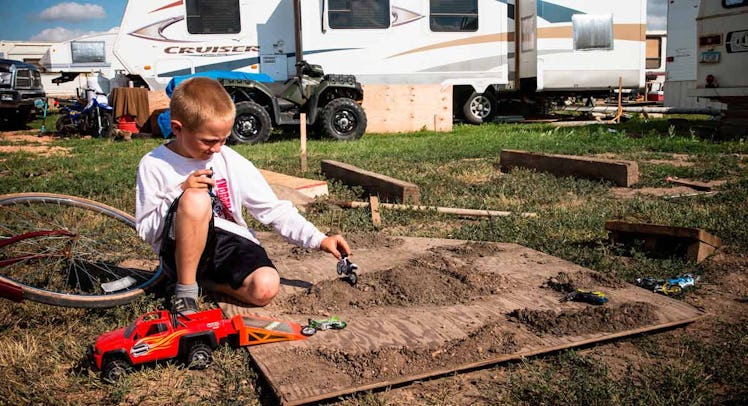Poor Kids in Rural America Need Republican Help
A new report shows childhood ends early for millions of rural American kids, but social programs their parents often abhor could help.

A new report from the global charity Save the Children ranks the United States 36th among 175 nations (between Belarus and Russia) on an index tracking so-called “childhood-ending” events like poverty, violence, and early pregnancy. The States’ so-so ranking, according to the report, is largely due to the fact that poverty remains an issue for 14.1 million American children. Specifically, the report reveals as many as 1 in 4 rural children are growing up impoverished. That’s a damning statistic and a strange one considering rural voters typically lean towards politicians who oppose social safety net programs proven to help kids. It is becoming clear that if rural communities want the best for their children, they need to demand more from their representatives.
In a global report supplement, titled “Growing Up Rural,” Save the Children digs deep into the reality of child poverty in America and finds that the poverty rate is highest in rural areas for children under 6 years old, and those affected by a disability. The report further states that rural counties account for around 90 percent of U.S. counties with high child food insecurity rates. Moreover, the poverty rates for rural communities have been consistently high and disproportionate to urban poverty rates for nearly three generations.
Much of the child poverty in rural communities can be linked to diminished job prospects for parents and geographic isolation, which present tough barriers to economic mobility. And when you pile on an infant mortality rate in rural counties 20 percent higher than urban ones, decreased chances for higher education, a higher likelihood of teen pregnancy and a higher likelihood of a firearm-related death or suicide, things look incredibly bleak for rural kids.
The data also shows there are plenty of ways to use public funds to help impoverished kids. Children benefit enormously from social programs like the Childhood Health Insurance Program, the Supplemental Nutrition Assistance Program, Medicaid, and comprehensive public sex education. Unfortunately, all of these programs have been opposed or cut by Republican lawmakers, who disproportionately represent rural districts. CHIP, the prime example, has been held hostage by Republican lawmakers and now faces the prospect of cuts proposed by Trump.
Strikingly, when the states that are highest in rural childhood poverty — over 25 percent — are correlated with Gallup data on political ideology, they are nearly all politically conservative. In short, rural voters are voting for people who are hobbling programs that might lift their children up.
It is easy to default to the classic, “What’s the Matter With Kansas?” cliche and ponder abstractly why voters in rural areas seem to support politicians who are unwilling to support their children. However, what’s clear is that those in support of helpful programs have yet to articulate a way in which they can effectively serve to strengthen and grow existing communities without altering them or diminishing the hard-won independence of the people who live in them. There has also been, perhaps, too little honesty about economic realities and the ways in which they are bound to shape and reshape the fortune of rural populations.
Social programs offer stability during times of flux and it is clear looking at the disheartening numbers from Save the Children, that this is such a time.
Overall, the report is not best interpreted as an endorsement of the nanny state — though clearly it does support the argument for social programs. Instead, it is best understood as a strong argument in favor of practical politics and accountability. Parents make informed and smart decisions in an effort to create opportunities for their children. Rural politicians need to make similarly informed and intelligent decisions to help those same kids.
This article was originally published on